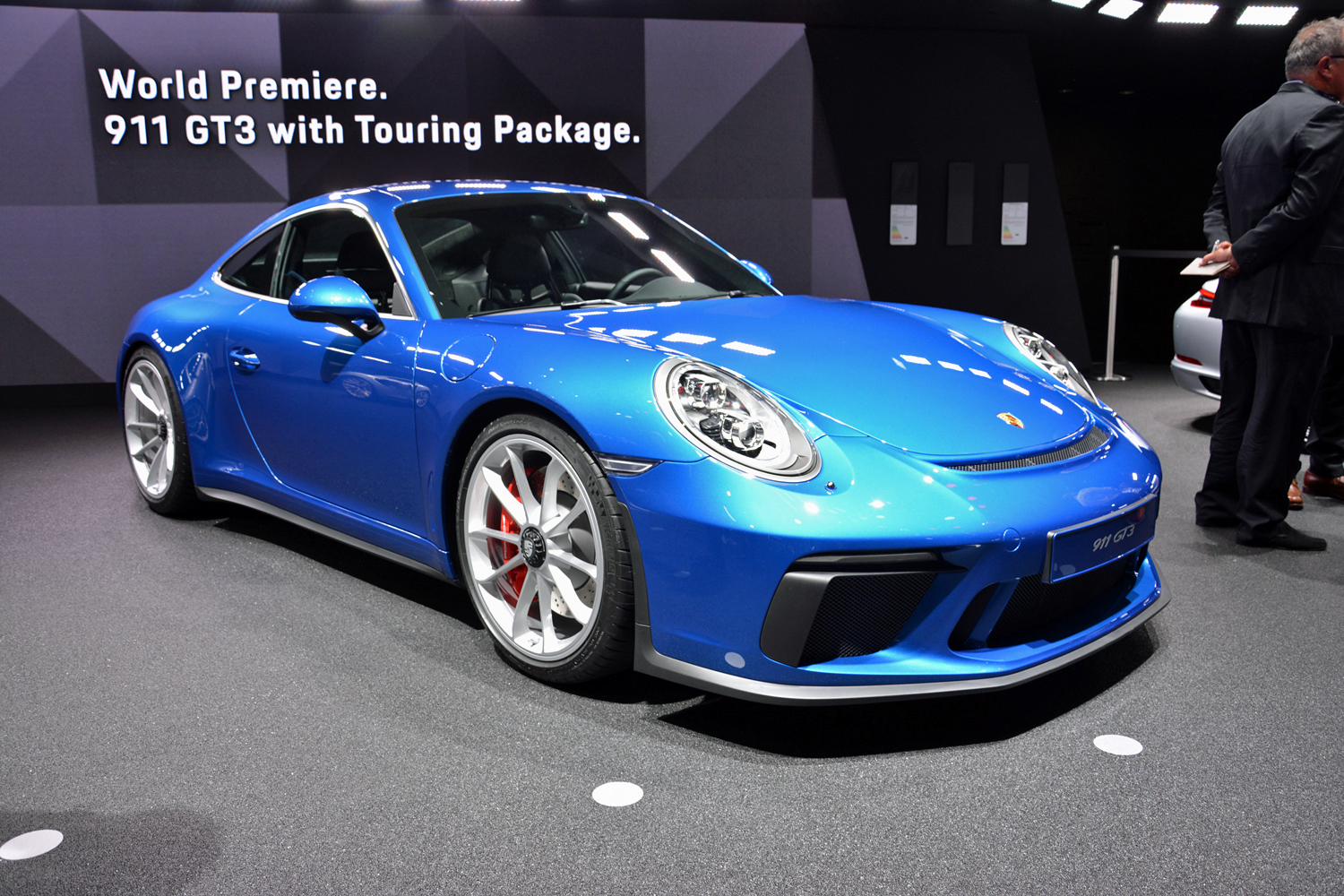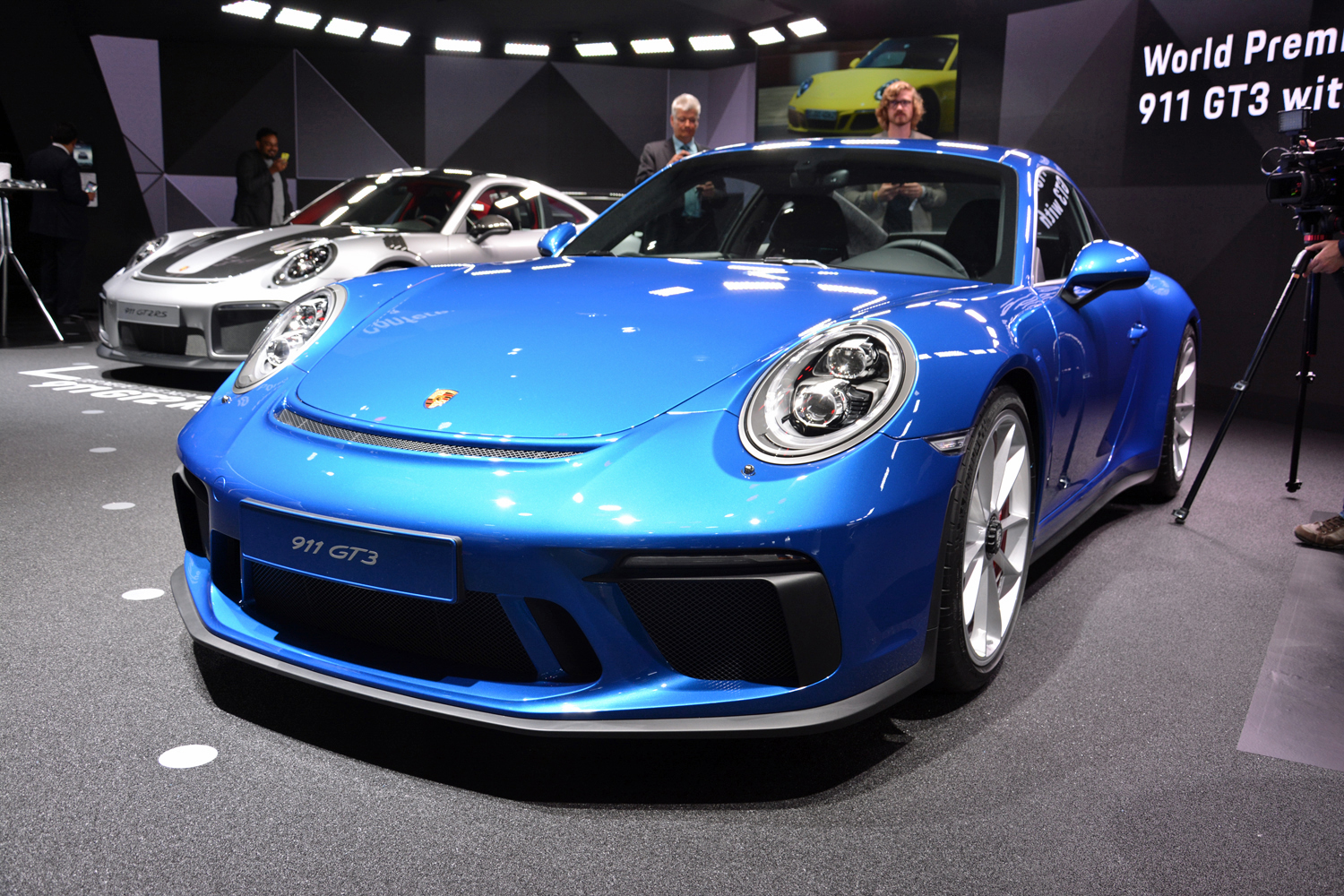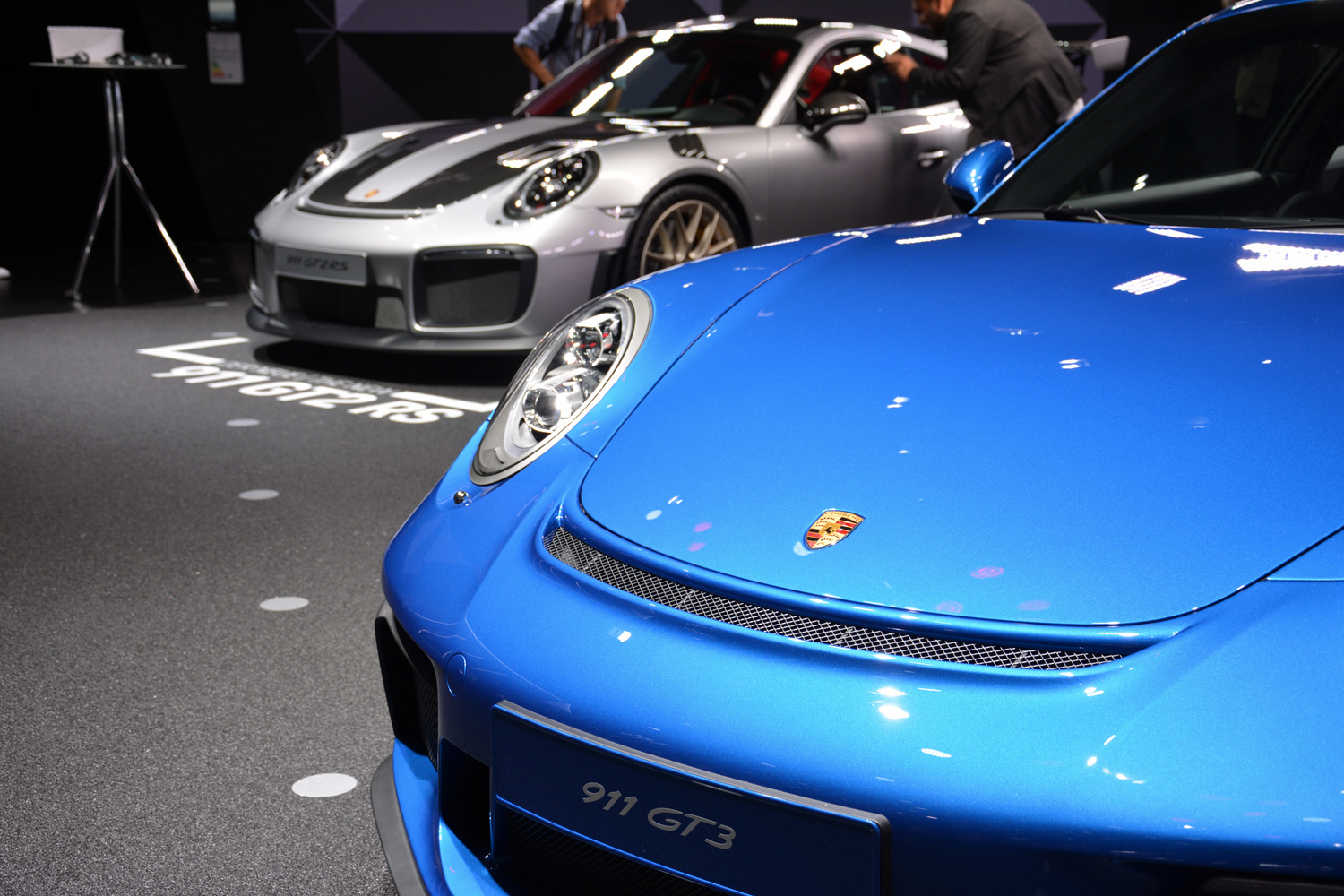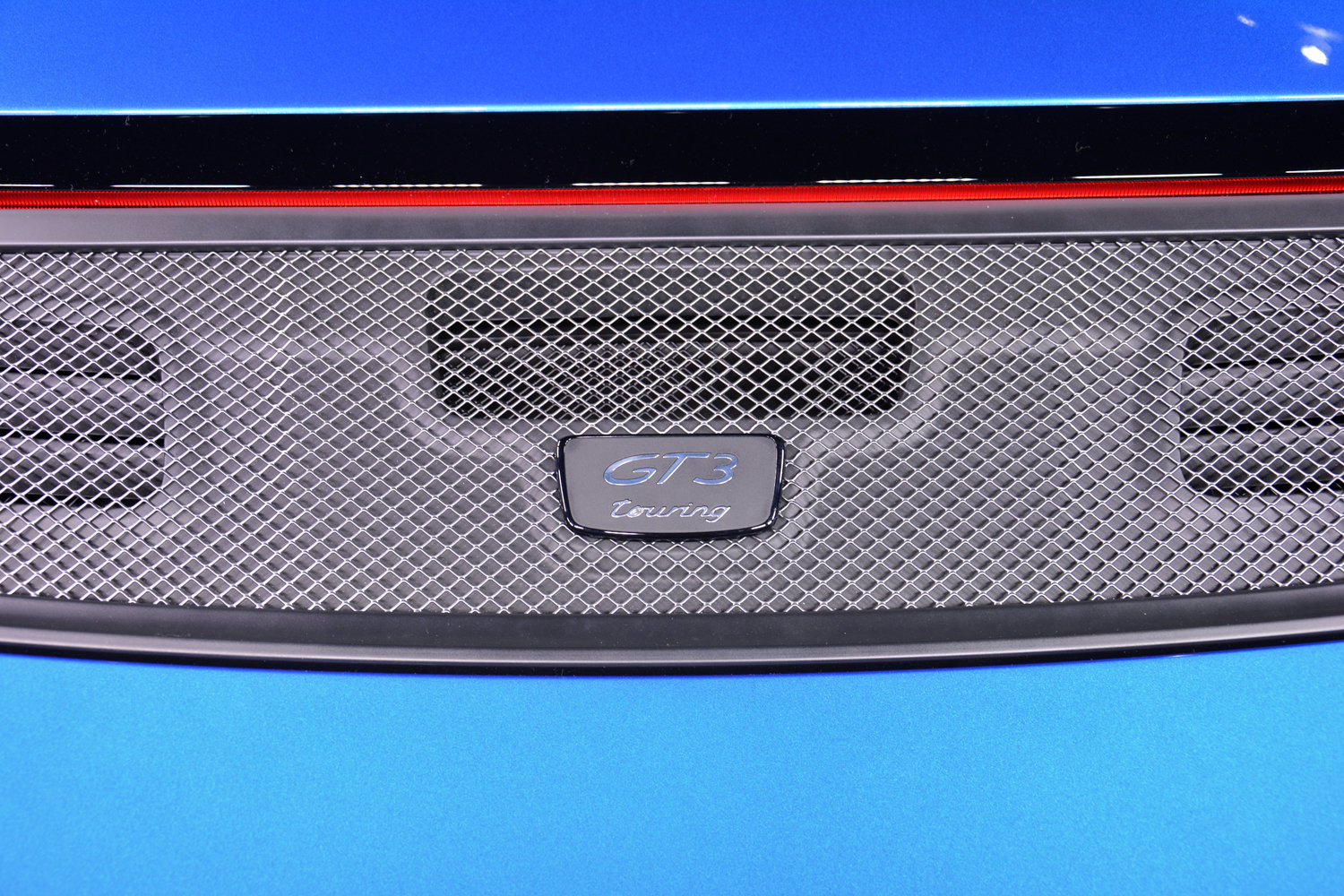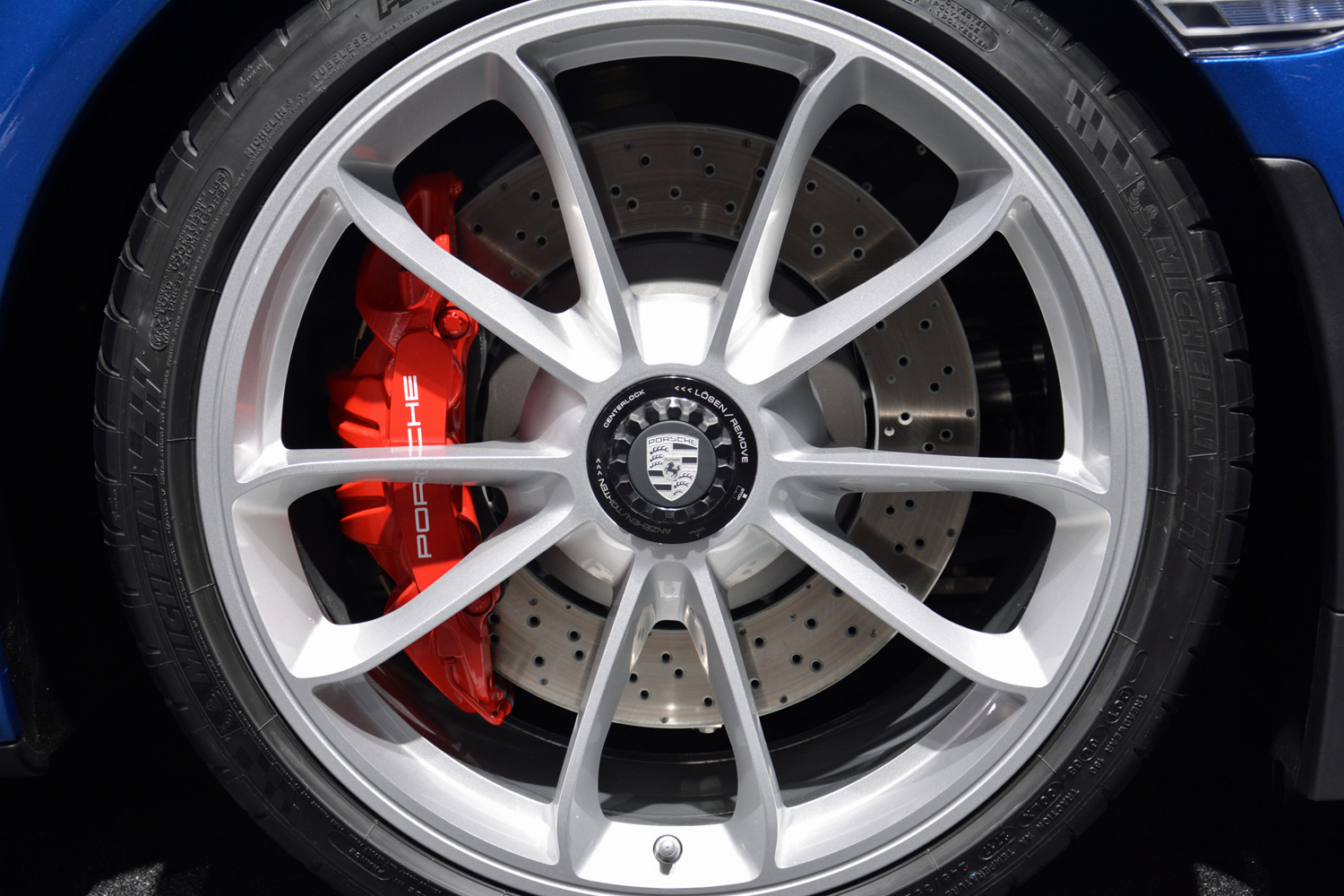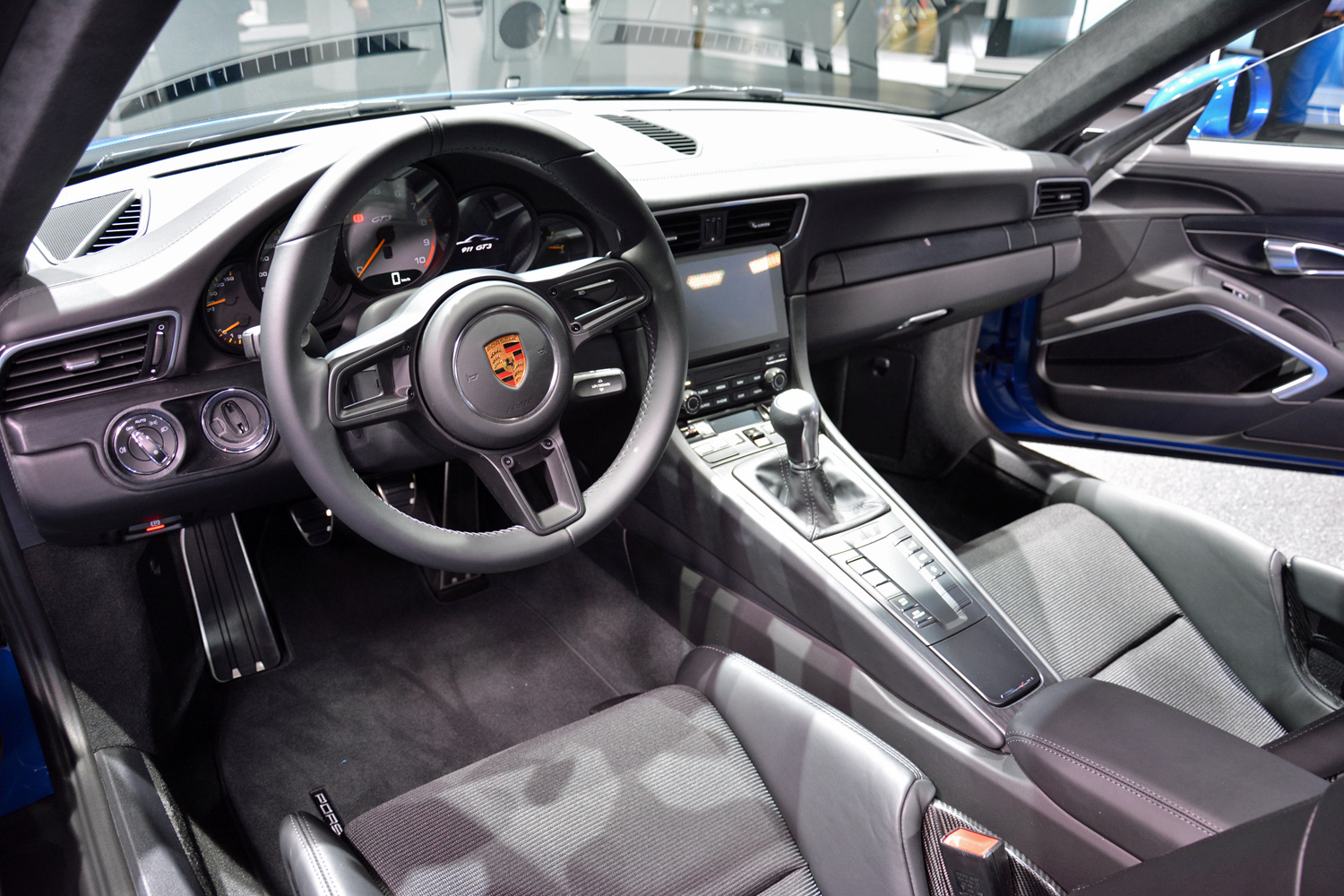For years, performance enthusiasts have looked to the Porsche 911 GT3 for the ultimate in connected, precision driving. When Porsche pulled its manual transmission from the latest generation GT3, fans could not contain their displeasure. Thankfully, Porsche updated the GT3 for this year by reintroducing the stick shift.
This little science experiment may inform how purists will respond to Porsche’s latest news from the 2017 Frankfurt Motor Show. The 2018 model year 911 GT3 is now available with a Touring Package that removes the traditional fixed rear wing in favor of an adaptive rear spoiler.
Now before you start calling this a mistake (or comparing the GT3 to the limited-edition, lighter 911 R), keep in mind that the GT3 Touring is only a package. The standard GT3 will still look as wild as ever. The idea behind the GT3 Touring is that some owners prefer to fly under the radar with their performance instruments. Now that the GT3 Touring’s spoiler can stow like the 911 GTS, subtlety can be achieved.
Porsche says the Touring Package name comes from the purity of the 1973 Porsche 911 Carrera RS. As such, the GT3 Touring ships exclusively as a two-seater with a six-speed manual transmission. Like the regular GT3, the Touring hits 60 mph in 3.8 seconds and tops out at 196 mph. Power is provided by a naturally aspirated 4.0-liter flat-six cylinder with 500 horsepower and 339 pound-feet of torque. Weight figures are identical between the GT3 and GT3 Touring at 3,211.
In addition to standard GT3 performance and convenience features, the GT3 Touring offers standard leather on the GT Sport steering wheel, shift lever, armrests, center console and interior door handles. Four-way power sport seats with an embossed Porsche crest are also standard, but you can upgrade to 18-way adaptive seats.
The 2018 911 GT3 Touring can be equipped with all available GT3 exterior colors, wheel choices, the Porsche Ceramic Composite Brake (PCCB) system, the front axle lift system, LED headlights, three seat options, and the Sport Chrono Package.
The Touring Package option is now available to order and is expected to reach U.S. dealers in early 2018. Despite the additional equipment, Touring Package models cost $143,600 plus $1,050 in destination fees — same as the standard GT3.
